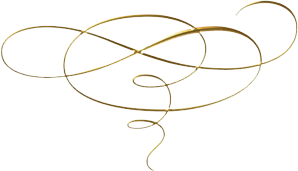CID Sections
Procedure for founding a CID Section
- You nominate persons for CID membership. Nominees send their professional profile (CV) and membership fee.
- A CID Section corresponds to a municipality, that is where there is a mayor. Minimum number of CID members required is 20. Among them are school directors, preferably from various forms of dance to ensure a broad representation.
- Once there is a sufficient number of CID Members the Secretariat sends to you an invitation to found the CID Section.
- The founding CID Members sign the standard statutes, as well as the act of foundation of the Section. A copy is sent to the CID Secretariat.
- The President of CID sends a letter of recognition to the Section and appoints a 5-member Executive Committee composed of persons proposed by you.
- The Section begins to function. It increases the number of its members by recommending new ones to the Secretariat, and applies to the authorities for recognition of the Section and for funding.
- After four years the President of the Section calls all Section members to a General Assembly where they elect an Executive Committee for the next 4 years.
- The CID Section is in full operation. It represents the entire spectrum of dance in the area. It enjoys government support and international recognition. It can apply to sponsors for funding. It has its own activities, within the policy of CID, see Functions of CID Sections.
Functions of CID Sections
1. A CID Section is the official representation of dance to the authorities (municipal, regional, federal).
Being the official summit organization for dance, CID is recognized by governments. In most countries CID Sections receive a permanent subsidy from local authorities.
Submit proposals to them for the improvement of conditions for dancers; obtain a permanent subsidy to the CID Section and/or office space.
Advise national or local governments, lobby for legislation.
2. Search funding sources, sponsors, scholarships, facilities for Section members.
3. Maintain contacts with journalists and the media. Obtain more coverage for dance, send news, give interviews.
4. Represent the city within CID. Apply CID policy. Maintain contact with CID Sections around the world.
5. Coordinate celebrations for World Dance Day 29 April.
6. Provide information to Members (operate a secretariat, a website, send circulars). Give advice to Members on how to organize better and how to promote themselves efficiently.
7. Provide information on dance to interested parties in the country or abroad. Promote cooperation, travel and exchanges with other countries.
8. Organize events of common interest: exhibitions, lectures, workshops, festivals, exchanges, travels, congresses. Publish brochures, books, DVDs etc. Priority events are Roll Call and Kaleidoscope (see details).
9. Operate a Dance Documentation Center; other CID Sections around the world will send publications.
10. Carry out CID world-wide programs (see list of programs posted on the CID website) or other programs, whether regional, national or local. Coordinate theInternational Certification of Dance Studies program (modules of 150 hours).
11. Obtain facilities for Members, such as:
– Discount at theatres, shops or services
– Special insurance scheme
– Venues for rehearsing, teaching or performing
– Legal advice and advocacy
12. Above all, a CID Section is expected to grow constantly by attracting more new members to CID from its area. The number of members shows the strength of the Section.
CID Sections
Argentina
Armenia
Brazil
Bulgaria
Canada
Ecuador
France
Georgia
Germany
Ghana
Greece
Haiti
India
Italy
Japan
Latvia
Macedonia FYRO
Mexico
Netherlands
North Korea
Oman
Poland
Portugal
Romania
Russia
San Marino
Serbia
South Korea
Spain
Switzerland
Tunisia
Turkey
Ukraine
U.S.A.

